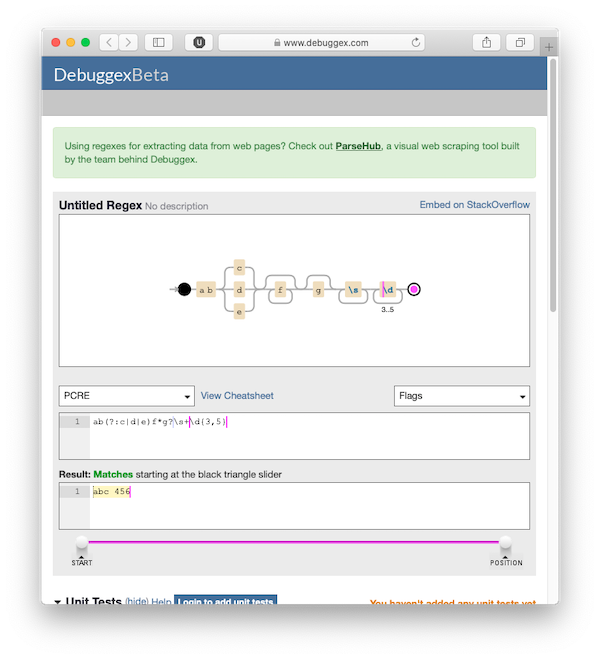Debuggex can turn PCRE regular expressions into railroad diagrams. It’s missing several advanced Perl features, but it’s good for the basic patterns you’ll create in Learning Perl:

Debuggex can turn PCRE regular expressions into railroad diagrams. It’s missing several advanced Perl features, but it’s good for the basic patterns you’ll create in Learning Perl:

Marek Rouchal wrote to me with an interesting addendum to my previous post Who makes it into @INC first?. Besides the different ways to add directories, some of them also load additional subdirectories that you don’t specify.
Perl finds modules by looking through the list of directories in @INC. There are many ways to add paths to that array, and although I’ve used all of them at some point, I’ve never quite thought about what happens when I use all of them together.
Remember that Perl uses the first matching module name it finds then
stops looking. It does not have a designed way to determine a best match and newest match or anything fancy. Whatever it finds first is the winner. This also means that someone could add paths to @INC and force your program to run their version of a module, even maliciously. This is something I write about in the “Secure Programming Techniques” chapter of Mastering Perl.
Yesterday I posted about not overwriting a file until you knew you had completely and correctly stored its data. Part of that was about data security and another part was completeness for other consumers. I used a temporary file and rename to move the new file into place. That’s not the entire story though.
Continue reading “Copy instead of renaming to preserve hard links”
How do you replace the the contents of a file? This is something I’ve been thinking quite a bit about because we often get away with bad practices, and it’s completely within the scope of Learning Perl to know how to do this. It might make a good edition to the next edition of the book.
Someone on Stackoverflow asked if it was okay to read from a file then write back to the same file. In this case, completely read the file and once done, write to the same filename. Most of the answers deal with the mechanics and miss the wisdom of that design.
That’s a problem with tutorial books too: there are only so many pages.
Continue reading “Use a temporary file instead of clobbering data”